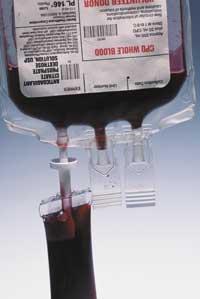How to prevent hepatitis
Some viruses enter our body and do not stand out until they spend a lot of time, in some cases the virus can spend years without producing any symptoms in our body, ‘silent’. And that's what happens in most cases of hepatitis. According to the Minister of Hepatology of the General Hospital of Valencia, Moises Diago, “in addition to the risk groups and those already diagnosed, 2% of the population has been in contact with the hepatitis virus, although it has not realized it. And so in recent years, more and more patients are diagnosed with chronic hepatitis acquired many years ago.”

In these cases there are no symptoms when the infection occurs. Therefore, it is advisable to perform periodic medical reviews to rule out the risk of hepatitis for fear. When is fear justified? Especially in the case of people who have received blood transfusions before 1990, since until then blood transfunction (i.e., blood intake, non-donation) was the main transmission route. Subsequently, the necessary controls were put in place to detect and discard the infected blood, leaving the problem in solution.
Classification
When hepatitis stands out, that is, when the first symptoms begin, at least in the early stages, it appears as a flu: discomfort, fever, muscle pain, loss of appetite, nausea, vomiting and diarrhea. If the disease progresses, yellow pain appears, that is, the yellowish color of the cutaneous and ocular conjunctiva, which is technically called jaundice, oral odor and a continuous bitter taste in the mouth. In turn, urine darkens, acquires a color similar to tea and stool whitens, while abdominal pain appears.
90% of all liver inflammations or inflammations (and hepatitis is nothing else, an inflammation of the liver) are produced by viruses. And the rest of the reasons are different. The transience and/or chronicling of the disease depends on the causal virus, but there are still unknown genetic factors and the defense system of the person also has to do with the evolution of the disease.
Viral hepatitis
The transmission route of this virus is fecal/general, that is, it is transmitted mainly through feces or feces and dirty water, or by eating foods that have been in contact with this water. Formerly they were very abundant in kindergartens, since children are touched many times and then take their fingers to the mouth, but nowadays sanitary conditions have improved, so it is less frequent. This type of hepatitis is the best and always cured on their own. However, there are a number of general recommendations to keep in mind (see table) so that the body survives the virus and liver damage is not repairable.

Prevention: if you travel to exotic territories where the incidence of hepatitis A is high, it should be included. However, in these territories we must be very careful with drinking water.
In this case, the means of transmission can be: the mother can infect the newborn (what is known as vertical transmission) at the time of delivery, even in unprotected sex (without condom) or through blood (which constitute horizontal transmission).
According to Dr. Diago, “95% of adults recover completely, but the same does not happen with children: according to some sources, only 5% of children are completely cured.”
In recent years, children are vaccinated against hepatitis B, so the incidence has decreased considerably in children. But adults should take the necessary precautions (using condoms, not sharing syringes, etc. ). ), between 5% and 10% of these patients for chronic disease, which if not properly controlled can lead to cirrhosis or long-term liver cancer.
It is spread mainly through the blood and in 70% of cases it becomes a chronic problem. This is the most common type of hepatitis, and sometimes it spreads and manifests or stands out for many years, when for any other reason this person is tested.
Prevention (also valid for hepatitis B): Use condoms, do not share sharp tools, or cleaning (toothbrushes, for example), and in the case of hepatitis B, consult vaccination.
It appears in people who already have other important infections, always along with B virus.
Other non-viral hepatitis
Long-term alcohol use, and high consumption, can damage the liver and cause chronic inflammation or hepatitis.
Some people are very sensitive to certain drugs. Never take medicine on your own.
Some types of hepatitis are autoimmune: they are more common in women and are often related to genetic factors, thyroid diseases and rheumatic diseases.
General recommendations When hepatitis is diagnosed (chronic or transient), it must be taken into account for total control:
|
For more information:
Tel. : 96 3509 91 87
(manual)
www.lahepatitis.com
(common)
www.aeeb.org
(very specialized)





